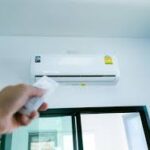Portable classrooms are available in various sizes to best suit a school’s needs. Single classroom units are sufficient to accommodate normal class sizes. Two-part classroom units accommodate a number of pupils or are utilized for other purposes, providing more versatility. Multi-classrooms can be arranged to comprise an entire mobile school or function as an extension of a permanent campus. These larger facilities may contain several classrooms, offices, or other spaces, such as a reception area. One key benefit of portable classrooms is that they are fully modular; this makes the building easy to expand or alter as the occasion demands. Schools could decide to order a size of their choice depending on their current need and add space later if the need increases.
Flexible Layout
The interior layout of portable classrooms can be rearranged depending on the educational requirements of each class. Divided spaces often accommodate individual, group study, and specialty equipment or furniture. Flexibility allows the client to use an open floor plan for various events and to organize the people utilizing the space in various ways. Units can also be equipped with washroom facilities, either single washroom or multi-stalled, depending on the school’s requirements. Integrated storage solutions allow for efficient use of space and the neat arrangement of study materials. Modular classrooms might be installed with windows or fluorescent lights, which may be favored for specialty art or science classrooms.
Control Entrances and Exits
Entryway design helps enhance students’ safety and well-being. Doors in modular classrooms are created to be safe, accessible, and functional for students and teachers. Choose entryways with single or double doors to accommodate a unit’s projected number of occupants. Wheelchair ramps guarantee that classrooms are fully accessible to all students and staff members.
Entrances may be arranged to control traffic movement and provide for efficient and safe evacuation in an emergency. Robust materials are utilized to withstand constant usage and changes in weather conditions. Consider adding porches or shade awnings to help protect the structures from weather conditions.
Add Windows
Schools can customize the size and number of windows on a modular classroom to maximize natural light and optimize energy efficiency. Double-pane or low-E glass might provide better insulation and keep the temperatures consistent throughout the year. Precautions such as using shatterproof glass or installing window locks further improve security without blocking the view. The location of windows can be arranged to minimize reflection on screens and writing surfaces. Some window designs may enhance cross ventilation.
Favor Multi-Use Furnishings
Install multi-use furniture in a modular classroom to facilitate the room’s changing uses or various learning activities. Chairs and desks should be movable, making it easy to arrange furniture in a way that optimizes the use of space. Teacher workstations should contain sufficient space for work and material storage. Some portable classrooms can be equipped with interactive whiteboards, internet connections, or other technological tools to enhance learning. To help in organizing student possessions, storage like cubbies or lockers can be included.
Choose Portable Classrooms
Portable classrooms can benefit schools experiencing enrollment growth or a need for temporary space during renovations. Schools can customize modular classrooms to meet learning needs or enhance focused academic areas. Most structures can be relocated, transformed to accommodate new uses, or altered, making these buildings a beneficial long-term investment. Contact a modular classroom supplier to










